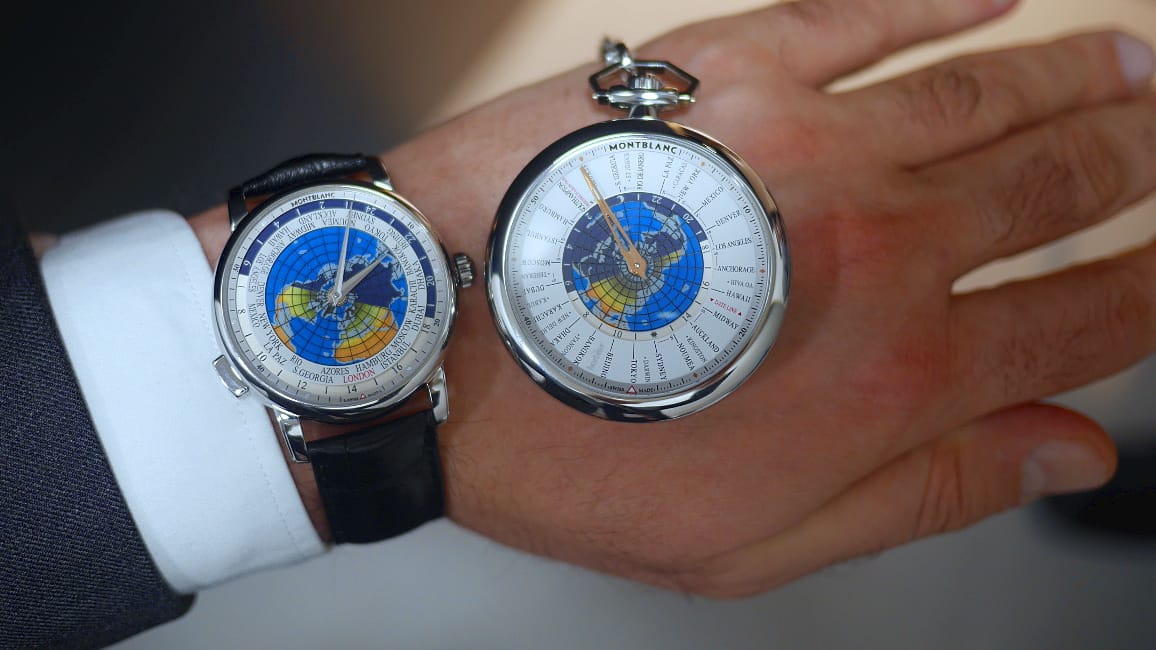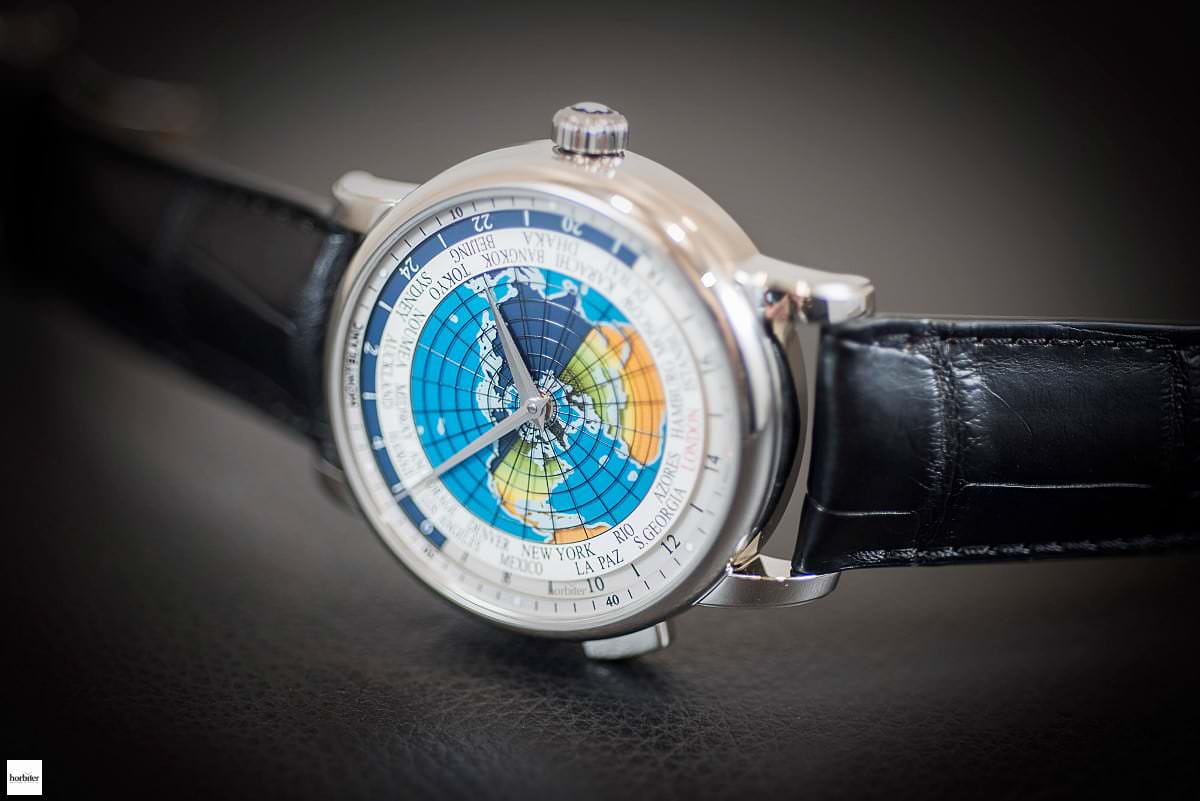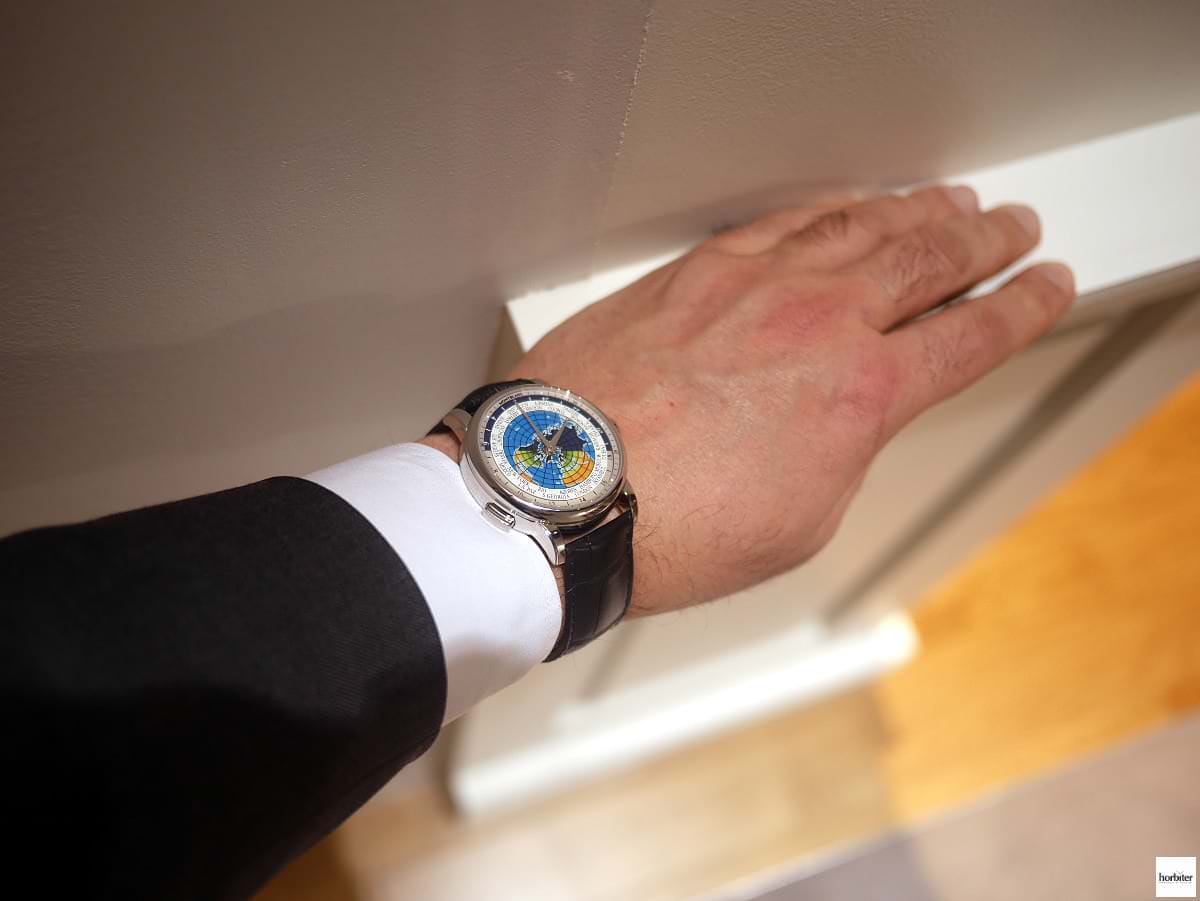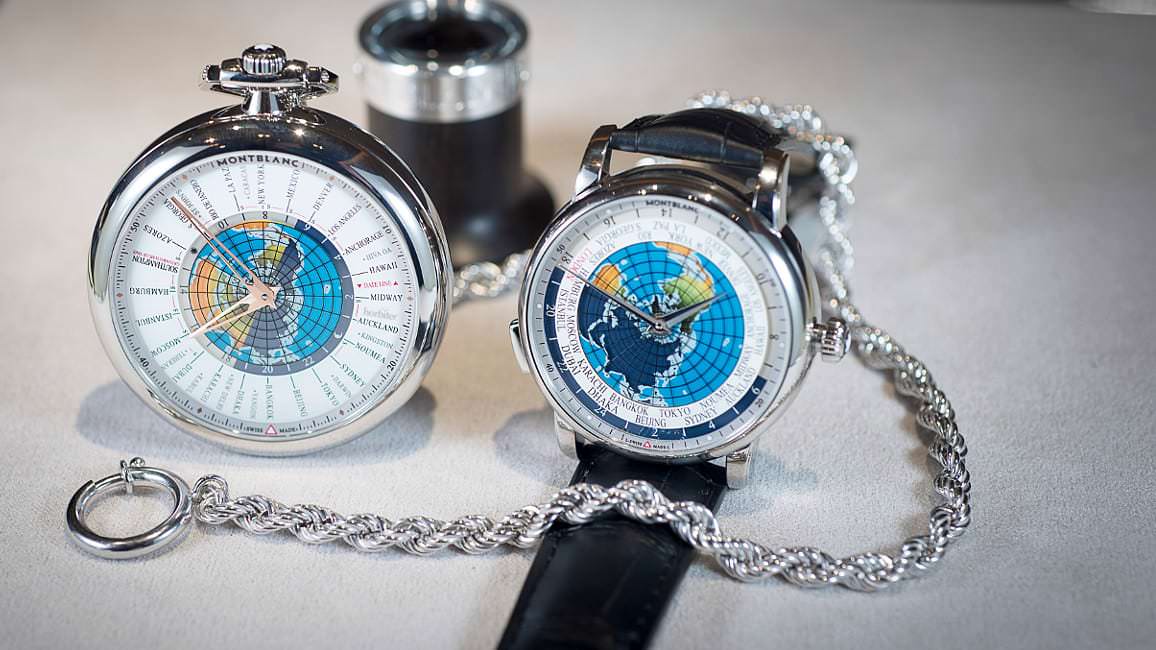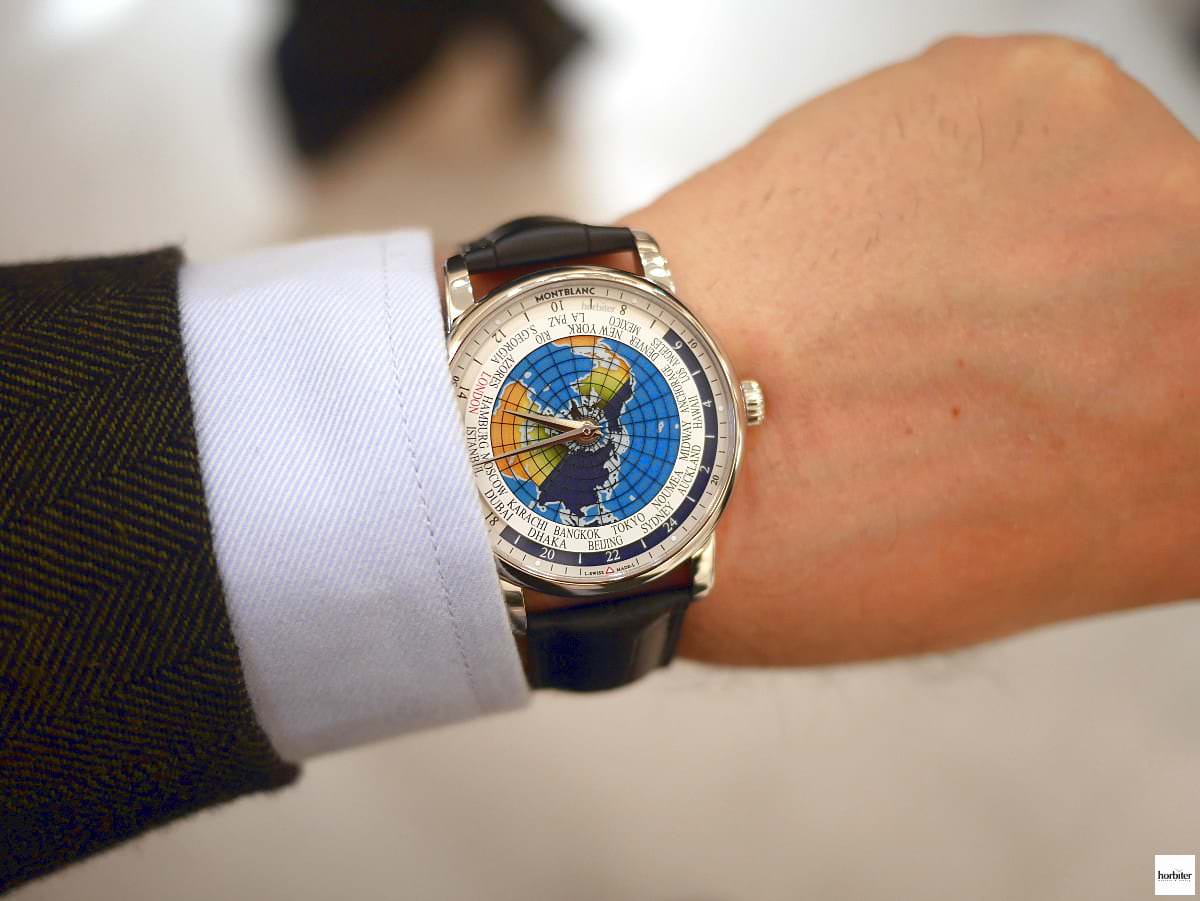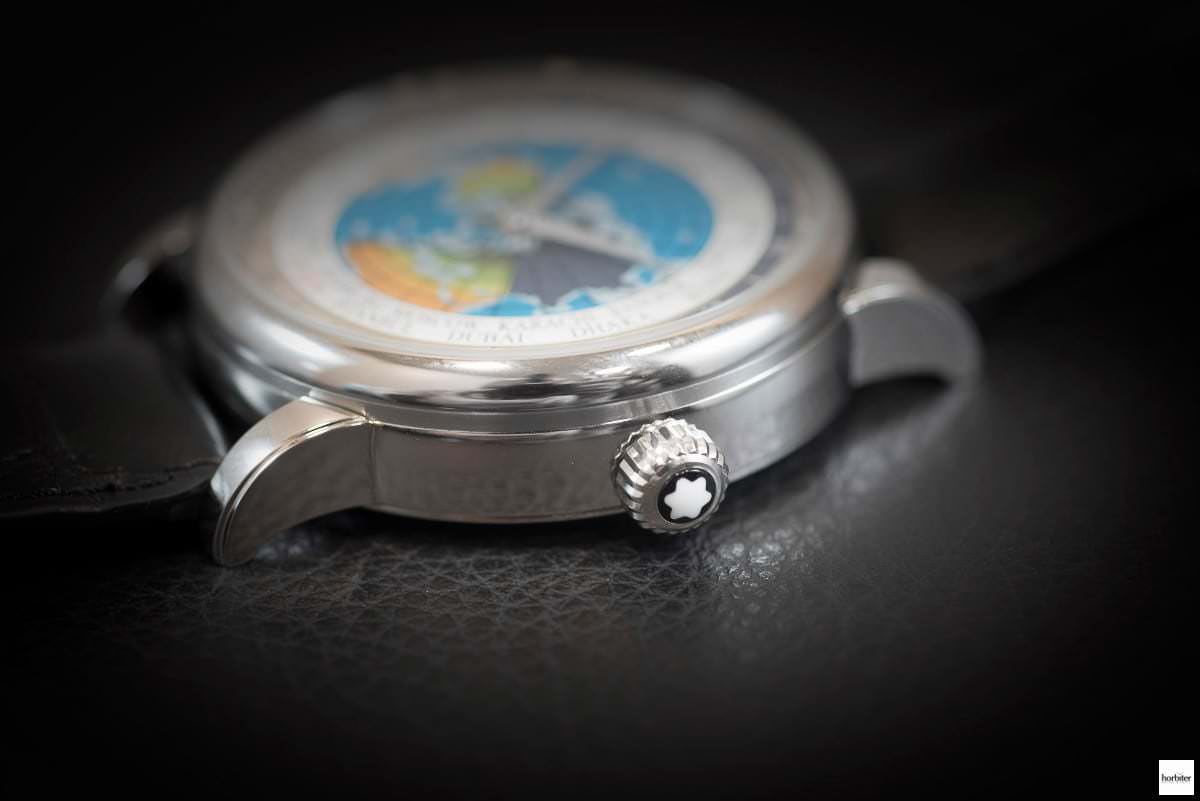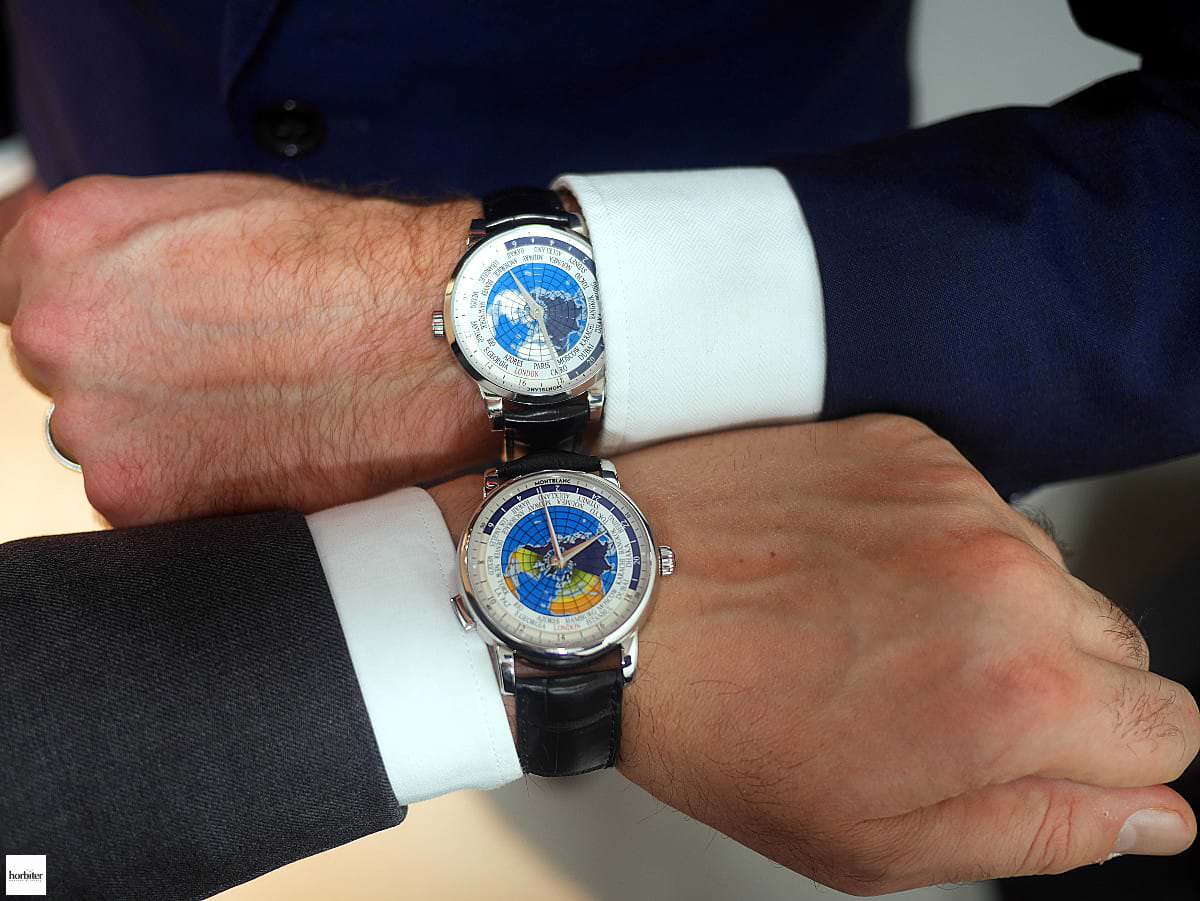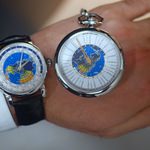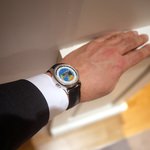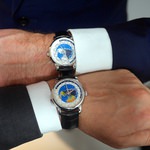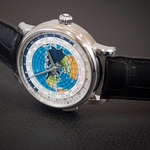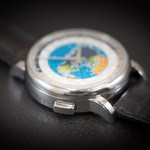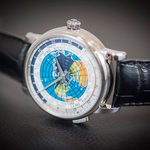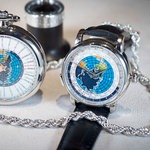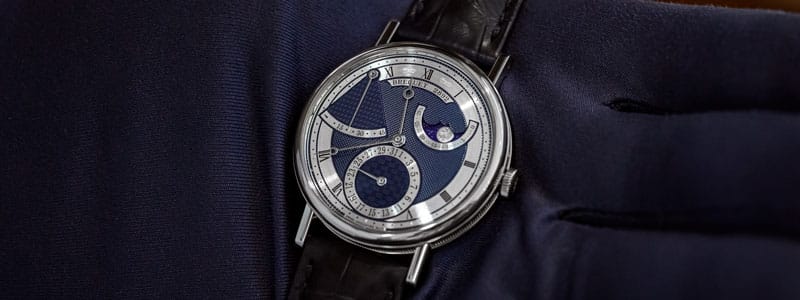The official excuse for this watch's launch is “the celebration of Montblanc's 110th anniversary” but truth is that Montblanc's watch manufacturing sector can't be contained, not even when it comes to improving one the best timepieces ever crafted in the year 2015. The Montblanc 4810 Orbis Terrarum replaces the Montblanc Heritage Spirit Orbis Terrarum, that is to say that there is a new collection (the 4810) in the Montblanc family.
The setting of the new local hour is managed through a rectangle-shaped button placed on the case at 8 o'clock, each time that you press it, the hours counter moves, the continents also move and so does the day-time/night-time indication and they won't stop until you have reached your destination city.
(Photo credit: Horbiter®'s proprietary photo-shooting)
Gaetano C. @Horbiter®


